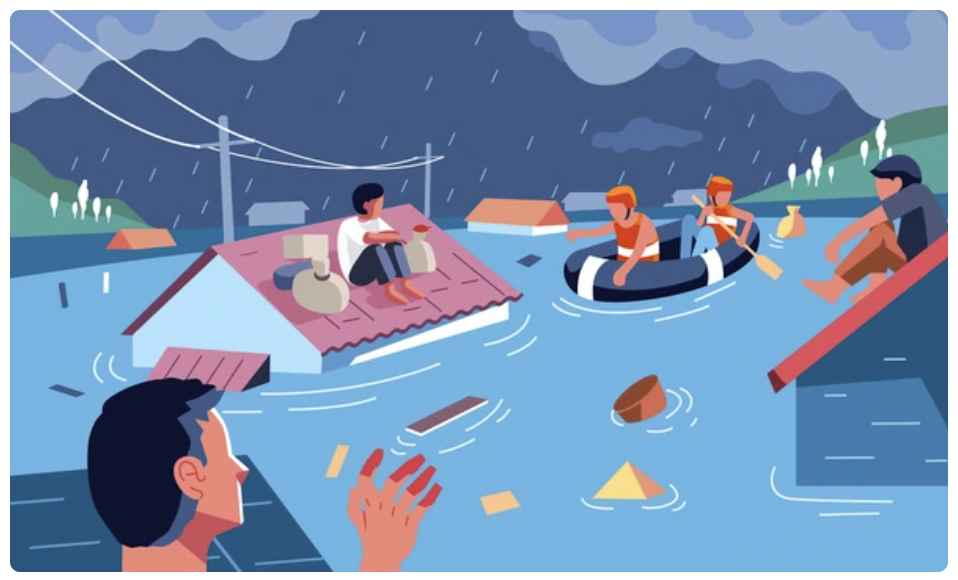Part 2: Tread Carefully: Surviving the Flood
Ready to level up your flood preparedness? Part 2 is here with more essential tips for staying safe when the waters rise. Happy reading!
Tread Carefully: Surviving the Flood
Did you know that just 60 cm of water is enough to make a car float, sweeping it away with surprising ease? Even more alarming, only 15 cm of fast-flowing water can knock you off your feet, making it nearly impossible to regain balance. These figures reveal just how precarious floodwaters can be, when even shallow water has the power to uproot heavy vehicles or put anyone nearby at serious risk.
We’re reminded of the harrowing incident in Italy last June, where three friends were seen to share a final embrace moments before they were swept away by a flash flood – a stark reminder of how unpredictable and devastating floodwaters can be. Hence, early evacuation is always the key to avoiding any incidents.
If you find yourself stuck in rising water, try not to panic. Move to the highest possible point as quickly as you can. It is most recommended not to walk, swim or drive through floodwater. However, if you must step into floodwater, make sure it’s not moving as it is tough to gauge depth, and one wrong step can have you swept away!
A trusty stick is your best friend here, helping you test the depth and ground ahead. If you’re driving to evacuate and get stalled, it is wise to abandon the vehicle and move on foot as quickly as possible. Do not drive into flooded roadways or around a barricade and stay off the bridges. Remember, when in doubt, turn around and don’t drown!
If you’re stuck inside a building and the water’s creeping up, your first move is to get to higher ground! Ready.gov suggests heading to the highest level of the building and only hitting the roof if you absolutely have to. Once you’re there, make sure to send that SOS signal!
Steer clear of basements or any room where water’s high enough to submerge electrical outlets or cords. If you spot sparks or hear any buzzing, crackling, or popping noises, it’s high time to make a speedy exit! And whatever you do, remember that water and electricity don’t mix so don’t test the water, literally!
Part 3 is coming tomorrow, don’t miss out!
Words to learn:
precarious – not securely held or in position; dangerously likely to fall or collapse.
harrowing – acutely distressing
gauge – estimate or determine the amount, level, or volume of
recede – go or move back or further away from a previous position
At ILTI, we encourage our learners to polish their language skills via real-life situations. We do not practise the chalk and talk approach – we learn and have fun at the same time. Join us today by calling / WhatsApp 010-395 3067 or email: info@ilti.edu.my.


